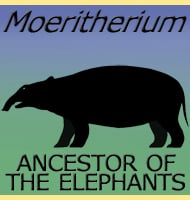Platybelodon
In Depth A relative to other gomphothere elephants like Gomphotherium and Ambelodon, Platybelodon also had a pair of forward facing tusks in the lower jaw that were shaped into a form of shovel-like structure. Like with its relatives, it is believed that Platybelodon used these tusks as feeding aids for uprooting plants and stripping bark. … Read more
